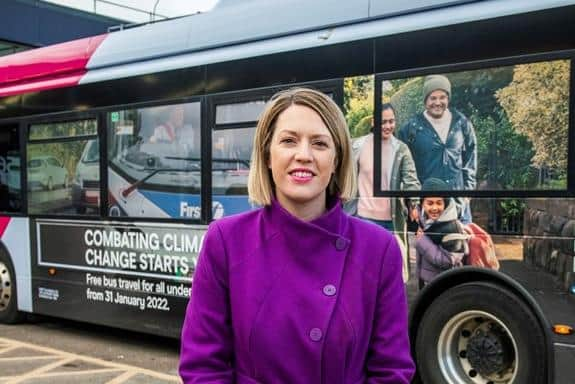Record funding for nearly 300 electric buses announced by transport minister Jenny Gilruth
The move underlined the Scottish Government’s determination to hit its ambitious target to scrap half the country’s 4,000-strong diesel bus fleet by the end of next year.
When the date was announced last September, only 272 electric and hydrogen vehicles had been introduced.
Advertisement
Hide AdAdvertisement
Hide AdMs Gilruth said almost half of the new buses supported by the Zero Emission Bus Challenge Fund (ScotZEB) – 137 – would be built by manufacturer ADL in Falkirk.


First Aberdeen and First Glasgow will receive funding of £18.6m for 74 buses, with £9m going to Greenock-based McGill’s for 41 vehicles.
Among the others funded, Stagecoach subsidiary Western Buses will receive support for 39 buses and sister firms Fife Scottish 32, Highland Country Buses 25 and Bluebird Buses 13.
Ms Gilruth said: "We want more people to choose to travel by bus and to do so knowing they are contributing to our climate change ambitions.
"Our Zero Emission Bus Challenge Fund is successfully decarbonising Scotland's bus fleet faster than ever before and making a significant contribution to our mission zero ambition for transport.
"Through this round we’re supporting smaller bus operators and rural service providers, whom I’m pleased are equally keen to step up and help tackle the climate emergency.”
One of them, William Houston, owner of Houston’s Coaches in Lockerbie, which is receiving funding for four vehicles, said: "We want to do our part to respond to the climate emergency and move to a zero-emission fleet.
“As a smaller operator, it’s been difficult for us to compete with larger operators and attract in financial support to help make the switch.”
Advertisement
Hide AdAdvertisement
Hide AdDuncan Hearsum, chief executive of the Order of Malta Dial-a-Journey in Stirling, said: “We’re pleased to be hosting an electric vehicle charging station for Stirling Council at our premises which has been funded through ScotZEB, offering fast and easy access to the Springkerse park and ride facility.”
“Sharing a charging facility will be a cost-effective way for us to start the shift to electric and will help us accurately evaluate our infrastructure needs.”
A message from the Editor:
Thank you for reading this article. We're more reliant on your support than ever as the shift in consumer habits brought about by coronavirus impacts our advertisers.
If you haven't already, please consider supporting our trusted, fact-checked journalism by taking out a digital subscription.
Comments
Want to join the conversation? Please or to comment on this article.
